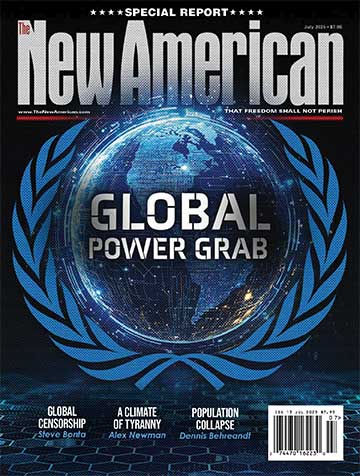
Item: Bloomberg News reported on March 1, 2011: “Cutting ozone pollution using the Clean Air Act will have saved $2 trillion by 2020 and prevented at least 230,000 deaths annually, the U.S. Environmental Protection Agency said in a report.” The account continued: “Tougher emission restrictions adopted in 1990 helped avoid more than 160,000 premature deaths, 130,000 heart attacks, 13 million lost work days and 1.7 million asthma attacks last year, according to today’s report, which measured only the impact of amendments from 1990. By 2020, complying with the amendments would prevent 200,000 heart attacks, 17 million lost work days and 2.4 million asthma attacks, according to the report. ‘The Clean Air Act’s decades-long track record of success has helped millions of Americans live healthier, safer and more productive lives,’ EPA Administrator Lisa Jackson said in a statement.”
Item: Writing in his March 4 “DailyFinance” column for the Internet portal AOL, entitled “The Fix for High Oil Prices? Regulate the Speculators,” Peter Cohan pins the blame for the increase in oil prices largely on insufficient regulation by the Commodities Futures Trading Commission and a delay in implementing the Dodd-Frank financial reform law. “Oil speculators using cheaply borrowed money to bet on rising oil prices and a falling dollar are playing on media-fueled fear to make big profits. The good news is that stopping those speculators would be easy: Regulators should demand higher margin requirements. By cutting off their easy ability to gamble with cheap debt, the regulators could push speculators out of the market and relieve consumers from pain at the pump.”
Item: Writing in the New York Times for February 28, Anne Mulkern of Greenwire comments: “As the price of oil climbs over $100 a barrel, it’s fueling arguments for congressional action from groups with very different agendas. The corn ethanol industry and farm groups say it underscores why Congress shouldn’t block federal support for the biofuel. Wind’s trade group argues that switching to plug-in vehicles powered by turbines would improve fuel independence.”
Correction: Intrusive reformers and regulators habitually insist that their conscience be your guide — preferably through government coercion. From their standpoint, it beats working. But when such folks are in charge, watch your wallets and guard your jobs.
Consider those who are out to save nothing less than the entire planet by deciding, say, how much carbon dioxide is to be emitted legally in the entire United States. They find it helps to have an enemy: Call it Big Oil. And they need the means to shut down workplaces: Call it the Environmental Protection Agency. Their message is blared out unceasingly by the President and other officials and echoed throughout academia and the left-leaning mass media.
Some of their guidance, such as calling for a crackdown on those speculating on price trends, often borders on the ludicrous — akin to dealing with the cold weather by placing federal controls on thermometers. We’d be better off creating energy by burning bureaucratic red tape.
Last year, the administration and the then-Democratic majority in both houses of Congress did their worst to try to jam through energy and climate legislation that would have slammed the economy into an even larger brick wall. Proponents of the attempt to set limits on so-called greenhouse gases were hardly shy about their shakedown scheming. If the “cap-and-trade” bill were not passed, according to the oft-repeated threat, there would be even stricter rules handed down by the EPA employing the Clean Air Act for lev-erage.
Yet, the extortion intimidation didn’t work. And now the EPA is essentially taking over as the law of land — despite the fact that the Clean Air Act makes no mention of carbon dioxide — with the agency’s musclemen trying to break the knees of certain businesses under the guise of implementing a “clean-energy” policy.
The EPA’s trumpeting of the report it ginned up about the costs and benefits of the Clean Air Act Amendments (CAA) seemed to embarrass even those who put the report together. The flawed methodology and unreliable assumptions involved were pointed out by, for example, the Heritage Foundation. Analysts there noted that the EPA’s own researchers admitted to “major uncertainties” in determining the supposed benefits of the legislation — with broad estimates ranging from $250 million to $5.7 trillion.
The hackneyed logical fallacy of “post hoc, ergo propter hoc” seems to be the EPA report’s guiding light (the specious notion that since something comes after a law was passed, therefore it must have been because of said act). As Heritage’s Diane Katz noted: “The researchers acknowledge that ‘there is no way to validate’ their forecast of air quality conditions for the non-CAA scenario, effectively rendering the comparison between regulation and non-regulation meaningless. Moreover, it is simply preposterous to assume that air quality would worsen unabated over the course of 30 years in the absence of a particular statute. History has proven otherwise, of course. Long before the original CAA was enacted in 1963, industrial emissions were declining as a result of technological advances and efficiency improvements. And both factors, as well as others, will continue to drive environmental improvements regardless of regulation.”
Barack Obama knew what cap-and-trade would do, and he said as much. When running for the White House, he told the San Francisco Chronicle that, under his policies, “electricity rates would necessarily skyrocket.” Before he became Secretary of Energy, Steven Chu in 2008 also publicly acknowledged what he wanted to occur (before it became politically embarrassing later and he backed away from his own comments). Said Chu: “Somehow, we have to figure out how to boost the price of gasoline to the levels of Europe.” Should gasoline hit $10 a gallon, he’ll obviously be thrilled, albeit secretly.
Imposing cap-and-trade legislation, through 2035, would lead to an estimated loss of $9.4 trillion to the U.S. Gross Domestic Product. Since Congress wouldn’t go along with that, the EPA’s regulators are trying to do the dirty work (which, recall, the extortionists told us would be even more costly).
Regardless of the consequences of the increased costs for Americans, the Obama administration and the EPA have been implementing their vision. As pointed out by Kimberley Strassel in the Wall Street Journal:
In March of last year, Mr. Obama reversed or scaled back nearly every major offshore oil opportunity that has come about since the price spike of 2008 — effectively reimposing a moratorium on drilling off the coasts. His administration has killed leases in developmentally crucial areas of Alaska. His EPA has refused to issue permits. The White House used the BP oil spill as an excuse to also shut down the deep-water Gulf.
Onshore? Interior Secretary Ken Salazar has revoked oil-and-gas leases. The EPA is suffocating the coal industry with regulation. One of the president’s only clear State of the Union proposals was to raise taxes on oil and gas. The White House’s energy policy, says Dan Kish of the Institute for Energy Research, is “embargoing our own energy supplies to drive up their costs.”
It’s not that the United States doesn’t have energy to burn. We have about 30 percent of the coal in the world, though that industry is under fire from the administration. Railroads in this country, according to Representative Ed Whitfield (R-Ky.), the House Energy Subcommittee chairman, are “taking more coal to the ports today for export to China than in any time in history.” We also have available some 80 percent of the world’s oil shale in the Green River Formation of the western part of the country, which contains “an estimated three times the recoverable oil reserves of Saudi Arabia,” according to Richard Rahn, chairman of the Institute for Global Economic Growth. In a small portion of the Arctic National Wildlife Refuge there are an estimated 10 billion barrels of oil, more than 15 years’ worth of our imports from Saudi Arabia, at the current rates.
So what happens to such potential? Very little, all too often. The Environmental Protection Agency sees to that. (This is the same EPA that has deemed for itself the right to regulate the potential for spilled milk on farms because — follow this, now — milk contains oil and the EPA has been granted authority over oil spills.)
Consider a business trying to develop energy in Alaska. Governor Sean Parnell has explained what happens. An oil company, the Governor has explained, “can buy federal leases, spend over $3 billion in permitting and capital costs, apply for an air permit from the Environmental Protection Agency (EPA), and then wait for five years and still have no permit. In one case, the EPA’s refusal to grant a permit for Royal Dutch Shell to drill in the Beaufort Sea delayed the creation of 54,700 jobs annually and $145 billion in payroll.”
This is not to say that the administration doesn’t support some energy-related programs. It does, frequently with our tax dollars. These are often unproductive ones run by cronies. Voltaire noted this phenomenon long ago: “In general, the art of government consists in taking as much money as possible from one class of citizens to give to the other” (from Dictionnaire Philosophique, 1764).
Using the words “green” and “clean energy” seems to be all that is needed to gain a subsidy. Reason Foundation senior fellow Shikha Dalmia has observed in the New York Post that “clean energy” has become the latest code for opposition to global warming.
This has become obvious, Dalmia writes, “given that even Environmental Protection Agency numbers show that virtually all emissions have dropped dramatically in recent decades — except for greenhouse gases. To cut those, Obama’s budget aims to hike Department of Energy spending by 12 percent from 2010 levels. He proposes $8 billion more for various clean-energy programs — on top of the $30 billion ‘invested’ via the 2009 stimulus. Even that’s only the tip of the iceberg. To pay for it all, Obama would stick it to Big Oil. He wants to eliminate $43 billion in oil-tax breaks over 10 years. That would be fine if he were aiming for a ‘level’ energy market, with the government playing no favorites; in fact, he’s just looking to divert the subsidies to his favorites.”
So if carbon dioxide — breathed out by every single human being and the stuff of life for plants — is a pollutant and deemed a loser by the feds, who wins the energy lottery? Expensive non-fossil fuels are the current favorites, even though they are highly subsidized and generally not as efficient. There are certain other winners too. For example, Communist China — which has no intention of cutting off its economic nose to spite its “environmental” face, but which does have a wealth of the rare-earth elements integral to a lot of “green” energy.
President Obama is wrong in claiming that his plan for subsidies and tax breaks for green projects will reduce our dependence on foreign oil, says H. Sterling Burnett, a senior fellow with the National Center for Policy Analysis. Rather, says Burnett in the Washington Times,
The greater our embrace of green-energy technologies, the worse off the United States likely will become geopolitically.
Key components of every green-energy technology, wind turbines, solar cells, energy-efficient lighting, high-tech batteries and other goods, are made from a small class of minerals known as rare-earth elements and other rare minerals. Despite their name, these elements are rather abundant, but at the moment and for the near future, they are found in economically exploitable concentrations only in the People’s Republic of China. With 96 percent of the global market, China has a de facto monopoly on the trade in these rare elements.
By contrast, the world’s oil market is diverse. Dozens of countries, including the United States, produce and export oil. In 2009, the United States imported oil or oil products from 90 countries. By comparison, there is no other supplier of rare-earth elements to turn to should China find it in its interest to restrict its supply to the market, leaving China free to manipulate the market — both price and supply — at will.
We should not wean ourselves off of drill bits only to addict ourselves to batteries and magnets.
We can’t regulate and subsidize our way to production and prosperity. But we do have the energy, within our borders and our people, to develop domestic resources. America should be open for business to boom, not closed so we can only divvy up shortages.
— Photo of "Iris" the cow being milked to provide raw unpasteurized milk to people who bought shares in its ownership: AP Images




